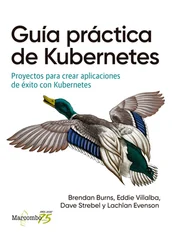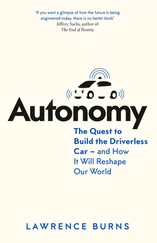Such inefficiencies arise because we purchase automobiles that are massively overbuilt for the purposes we most frequently use them. Waymo CEO John Krafcik calls this the “occasional-use imperative.” Think about it. In the United States, 85 percent of personal travel is by automobile. Average occupancy of 1.7 people per mile falls to just 1.1 in vehicles conducting work commutes. Average speed in congested cities can run as low as 12 mph. And yet the cars, trucks and SUVs we drive have enough room for at least five adults, with engines so powerful many can travel at 120 mph and beyond. “The mix of cars on our nation’s roadways is completely messed up,” Krafcik observes.
These overbuilt vehicles are dangerous, because they’re heavy. The World Health Organization estimates that auto crashes around the world kill 1.3 million people a year. In 2016 alone, 37,461 Americans were killed in auto crashes, contributing to make unintentional injuries the leading cause of death for Americans in the first half of life.
Using your vehicles just 5 percent of the time means that you have to figure out a place to store them the other 95 percent. So, you need to devote a good chunk of your home to a garage (and driveway), and not only that—where you work has to reserve space for your car, too. As does your favorite shopping mall, your dentist’s office, the stadium for your favorite sports team, your city’s streets—the list goes on. So we pave over big swathes of valuable real estate in our cities, creating asphalt heat islands that elevate urban temperatures and may contribute to climate change.
All of which is why Morgan Stanley financial analyst Adam Jonas calls the automobile “the world’s most underutilized asset” and the auto industry “the most disruptable business on earth.” It’s why Pulitzer Prize–winning journalist Edward Humes says, “In almost every way imaginable, the car, as it is deployed and used today, is insane.”

I couldn’t agree more. Thankfully, we’ve entered a period that is moving us toward a saner transportation solution—one of those rare disruptions that will improve the way life happens for decades, and perhaps for centuries, to come. This transformation will occur because it allows people to get around at lower cost more conveniently. Happily, the solution also happens to be better for the earth.
Many of the key players in the disruption turned to their work after a moment of extreme frustration with automobiles and the system they’ve spawned. For example, consider Google cofounder Larry Page, who, fatefully, did not have a car when he attended the University of Michigan as an undergraduate.
Page studied at the University of Michigan from 1991 to 1995 to get his bachelor’s degree in computer engineering. He had a strong personal connection to the school; his grandfather, an autoworker for General Motors in Flint’s Chevrolet plant, had driven Page’s father and aunt around the Ann Arbor campus of the University of Michigan and told the children that they would one day attend the place. Both did. Page’s father also met Page’s mother there. So it was almost inevitable that Page himself would attend U of M.
Ann Arbor is a pleasant place in the spring, summer and fall, full of trees and rolling hills, student cyclists and joggers, the landscape dominated by the green of natural vegetation and the so-called maize and blue that are the school’s official colors.
But in winter, the campus turns into a difficult place to be outside. Few people get around by bicycle between December and March because Michigan winters can be brutal. The landlocked campus is far from any temperature-buffering major body of water. Darkness falls by 5:00 P.M., and the cold is omnipresent. The sidewalks can feature slush and sleet in early winter, which then harden into black ice come January and February.
The other thing about Ann Arbor is that traffic can be terrible. In summer, it’s bad. In winter, when the snowdrifts freeze into iron berms that narrow the already traffic-clogged roads, the car congestion and parking woes grow even worse. Those who don’t have automobiles are forced to ride the bus, which arrives irregularly, and sometimes not at all.
Page would get out of one of his afternoon engineering courses and head to the bus stop and wait, shivering, looking down the road hoping to spy the distinctive headlight pattern of the buses used by the local transit authority. While automobiles passed by, their individual drivers embedded in little cocoons of warmth, Page would huddle in the shelter and hope for the arrival of a ride that never seemed to come, and he would think about how poorly we as a society had solved the transportation problem.
Consequently, Page became obsessed with alternative solutions. Those interminable minutes that Page spent waiting for the bus in the Michigan winter convinced him to draft, as a U of M student, an idea for a personal rapid-transportation system, an interconnected monorail on which two-person mobility pods were available on a moment’s notice to ferry riders wherever they wished. Those frigid minutes also encouraged Page to join U of M’s solar-car racing team—after all, cars that ran on free solar power would presumably make transportation more affordable to everyone. Finally, those minutes were a factor in Page considering to pursue, as a graduate student at Stanford in the late nineties, autonomous-car development rather than the world-changing search-engine project on which he eventually landed. And they spurred Page’s interest in the desert and urban challenges that the U.S. military’s Defense Advanced Research Projects Agency (DARPA) staged in California in 2004, 2005 and 2007. Those challenges led directly to the decision by Page and his partner, Sergey Brin, to fund Google’s Chauffeur self-driving car project (now called Waymo), which convinced the world that autonomous vehicles were not just possible, but inevitable, and a lot sooner than many people expected.
My moment of greatest frustration with the old solution happened in Germany, where I was attending Frankfurt’s 2001 International Motor Show. At the time, I was General Motors’ corporate vice president of research, development and planning, and a member of CEO Rick Wagoner’s thirteen-person strategy board, which was responsible for making the automaker’s biggest decisions.
In Frankfurt, I was heading back to my hotel when my cell phone rang. It was GM security, which was unusual. What was even more unusual was the tension in the caller’s voice. The security officer said he could not get into the details, but that as soon as I arrived at the hotel I was to proceed to a specific conference room.
I’d never received a call like that.
When I entered the conference room, several other GM Automotive Strategy Board members were present and the TV was turned on. I could see on the screen that one of the World Trade Center towers was on fire. Minutes later I watched a jetliner fly into the second tower.
It took three days before I was able to get home from Germany. I did a lot of thinking as those days passed. Many theories exist to explain why the attacks occurred. But it’s impossible to ignore that one contributing factor was U.S. dependence on oil imported from the Middle East.
I couldn’t help but feel as though the auto industry bore some blame for what happened. America was dependent on foreign oil because we needed it to power the cars and trucks that GM produced. Our customers enjoyed great freedom with GM products. But, I asked myself, was this freedom worth the price? For me, 9/11 screamed that the status quo of the auto industry, dominated as it was by gas-powered combustion engines, was unacceptable. And thanks to my job leading GM’s R&D, I was in a position to do something about this. In fact, I felt like it was my responsibility to accelerate the development of alternatives to the current transportation system.
Читать дальше













